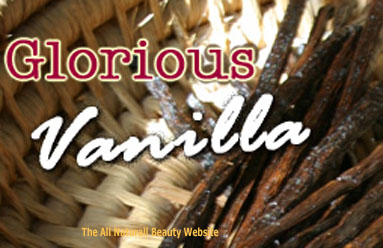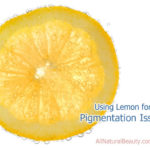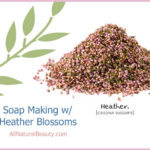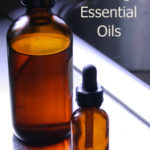
During the fall and winter months, I think of vanilla! Vanilla is widely used in baking and skin care. Vanilla extract, vanilla glycerite, and vanilla infused oil are super easy to make. It takes a bit of time to make them, but there is nothing yummier than homemade vanilla extract, glycerite, and oil! I like making my own vanilla products because of their flavor and fragrance, and many commercial vanilla extracts contain additives like propylene glycol, corn syrup, or refined sugar. Many vanilla scented carrier oils are made with synthetic fragrances, and many are not edible. Once you try homemade vanilla extract, vanilla glycerite, and vanilla infused oil, you will never go back to commercial brands!
Ingredients for vanilla extract (alcohol based):
Vodka
Vanilla beans
OR
Everclear, grain alcohol, grape alcohol, or neutral spirits
Distilled water
Vanilla beans
OR
Other kinds of alcohol (like rum, brandy, etc)
Vanilla beans
Ingredients for vanilla glycerite (a glycerin based vanilla extract):
Vegetable glycerin
Distilled water
Vanilla beans
Notes on ingredients:
If you are using vodka, then you do not need to add any additional water, since vodka already contains water. Try to get as high of a proof as possible, since the higher the alcohol content, the longer the shelf life. I like using at least a 100 proof vodka (which is 50% alcohol by volume), but if you cannot find 100 proof (not every state sells 100 proof), then use 80 proof (which is 40% alcohol by volume).
If you have access to Everclear, grain alcohol, grape alcohol, or neutral spirits then you’ll need to dilute it with distilled water. Grain alcohol, grape alcohol, or neutral spirits are usually 95% alcohol. Everclear can range from 75.5% to 95% alcohol. Alcohol and water will extract different herbal constitutes. Like many other herbalists, I like using 60% alcohol and 40% distilled water when making herbal extracts (also known as tinctures). Mix the alcohol with the water before adding the beans. If you use Everclear that is 75.5% alcohol, then you do not need to add any additional water, unless you want to.
Some people like to use other kinds of alcohol like brandy or rum. Make sure the alcohol content is at least 35% by volume (commercial vanilla extracts are usually a minimum of 35% alcohol). Note that if you use an alcohol like rum or brandy, your vanilla extract will also taste like that alcohol too.
Glycerites are made the same way as alcohol based tinctures, except vegetable glycerin is used instead of alcohol. I usually use 60% glycerin and 40% water. Be sure you use food grade glycerin. Shelf life won’t be as long as using alcohol, but vanilla glycerite is a good alternative for those that prefer an alcohol free vanilla extract.
Directions to make vanilla extract and glycerite, and more notes:
Pour the vodka, everclear/grain alcohol/grape alcohol/neutral spirits and distilled water, glycerin and distilled water, or other drinking alcohol in a clean, sanitized glass container. If using water, cap it and shake well to mix. Split the vanilla beans in half and scrap out the insides. Cut the split vanilla beans into a few small pieces. Uncap the container and add the insides and the vanilla pieces. Cap it again and shake well. Let the vanilla infuse in the liquid (it will take a long time to infuse). Shake daily or every once in a while for best results. Store in a cool, dark place like a cupboard. I highly recommend using amber or blue or another colored glass when making herbal extracts.
I like to infuse the vanilla beans for several months. I usually infuse it for anywhere from two to six months. But you can start using it after 4 to 5 weeks if you are in a rush, though the flavor will not be as intense. The longer it is infused, the more intense its flavor will be.
After infusing it, many people like to strain out the vanilla beans. Other people just like to leave them in. Personally sometimes I strain it and sometimes I don’t (it depends on how fast I use up the vanilla extract or glycerite. I usually don’t leave the beans in longer than six months). You can use the spent beans in baking; they will still have a lot of flavor. Some people like to let them dry and bury them in sugar (or another powdered sweetener) to make vanilla sugar. They can also be used in skin care and can be composted too!
People have differences of opinion on how many beans to use when making vanilla extract or glycerite. The federal, commercial standard is 13.35 ounces of beans per gallon of extract, which amounts to roughly 3 to 4 beans per 4 ounces of liquids used. Vanilla beans differ in length so the number of beans per pound varies. A couple vanilla vendors state there are generally between 100-110 or more vanilla beans per pound, but some people say a pound contains way less and others say there are a lot more beans per pound. I like to use way more vanilla beans than the standard, which makes a potent, folded (highly concentrated) vanilla extract or glycerite. I usually chop up and use as many as I can fit in my container!
Shelf life of vanilla extract will vary, depending on the alcohol content. A 60% alcohol concentration will have a greater shelf life than a 35-40% alcohol concentration. Many people state vanilla doesn’t have a shelf life (that it is good forever) or that the 35% standard is good for several years, but I disagree. Like any other herbal tincture, I highly recommend using herbal tinctures made with 60% alcohol within two to five years. For 35-40% alcohol based tinctures I suggest using them within 6 months to a year. For a glycerite made with 60% glycerin, use them within a year. If you are using a lower amount of glycerin, use them within a few months. Shelf life is only an estimate and they may last longer or shorter than the stated times (shelf life greatly depends on how they are handled and stored).
Most people use vanilla extract and glycerite in foods, but they can be used in skin care too! Add a few drops to certain products like masks, serums, lotions, etc. Vanilla is a very soothing and calming scent. And it smells delicious too!
You can store herbal extracts or glycerites in a cool, not damp, dark place like a cupboard. I prefer storing them in my fridge. But if I don’t have much room in my crafting/business fridge, I will store the glycerites in the fridge, and the alcohol based extracts in the cupboard. Some people store glycerites in their cupboard, but if you do this, make sure you store it in a place where is it very cool.
If you are gluten free or vegetarian like I am, then please research carefully and make sure your alcohol source is gluten free and vegetarian! Not every alcohol is vegetarian. In addition, some alcohols are made from wheat, rye, or barley and they may or may not contain gluten. For distilled alcohols, the gluten is removed during the distillation process, however, not all alcohols are distilled. Also some people with gluten issues state they still have trouble using distilled alcohols (even if they are supposed to be gluten free), while others have no issues using them.
Ingredients to make vanilla infused oil:
Carrier oil of your choice
Vanilla beans
Directions for vanilla infused oil, and notes:
To make vanilla infused oil, split the vanilla beans, scrap out the insides and chop up the split vanilla beans. Add the chopped beans and insides to a clean, sanitized container. Add the carrier oil. Shake well. Infuse for two months or longer. Keep it in a cool, dark place. Shake daily or every few days. Strain the vanilla infused oil (I usually use a coffee filter or cheese cloth). Pour into a different clean, sanitized container.
Like vanilla extract, there are differences of opinion on how many beans to use per ounce of carrier oil. You can use either the concentrations stated above for the extract and glycerite, or you can use as many vanilla beans as you like! I usually use as many as possible, since I like my vanilla infused oil strongly scented!
You can use any carrier oil you prefer. However carrier oils have various shelf lives, so if you use a carrier oil with a short shelf life, be sure to use your oil up quickly. For skin care I like to use jojoba or fractionated coconut oil for their long shelf life, but I have used carrier oils with shorter shelf lives too (depends what I am making, since I don’t use jojoba and fractionated coconut oil in all of my skin and hair care!). Shelf life of vanilla infused oil will depend on which carrier oil you used, and how it is stored and handled. In general it is best to use it within a few months to half a year for most carrier oils. For carrier oils with extremely long shelf lives, use within a year or so.
Use the spent beans in skin care products like masks and scrubs. Or if you used a food grade oil, you can use them in baking. Store the spent oil soaked beans in the fridge when not in use. Or compost them!
You can use vanilla infused oil in foods too. Make sure your choice of oil is food grade and edible. Not every oil is suitable for consumption.
Once the vanilla infused oil is made, I highly suggest keeping it in the refrigerator to help extend shelf life and keep it fresh. If you don’t have room in your fridge, keep it in a cool, dark and not damp place (don’t store it in the bathroom, this greatly reduces shelf life). For skin care, you can add antioxidants like vitamin E and rosemary oil extract to help extend shelf life. If using the vanilla oil for food, be sure that the vitamin E oil is food grade. The amount of vitamin E and rosemary oil extract to add will vary by vendor (since concentration of these products differs from manufacturer to manufacturer). If you don’t have any vitamin E or rosemary oil extract, then you don’t need to add an antioxidant but they really help extend shelf life.
Links:
The Food and Drug Administration’s web pages on vanilla extract standards:
http://www.accessdata.fda.gov/scripts/cdrh/cfdocs/cfcfr/CFRSearch.cfm?fr=169.3
http://www.accessdata.fda.gov/scripts/cdrh/cfdocs/cfcfr/cfrsearch.cfm?fr=169.175
http://www.accessdata.fda.gov/scripts/cdrh/cfdocs/cfCFR/CFRSearch.cfm?fr=169.176
Good article on non-vegetarian ingredients in alcohol:
http://www.messyvegetariancook.com/2009/12/02/is-it-vegan-alcohol/









